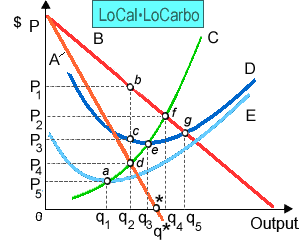When LoCalLoCarbo, the favorite corporation of fad dieters,in that case produces output q* [that where is marginal revenue is zero] as: (1) LoCalLoCarbo’s total revenue is at its highest possible level. (2) expanding output to q4 would cause total revenue to fall. (3) LoCalLoCarbo could increase its profit by decreasing production because MC > MR. (4) the consequent point on the demand curve facing LoCalLoCarbo has unitary price elasticity. (5) All of the above.

Please choose the right answer from above...I want your suggestion for the same.